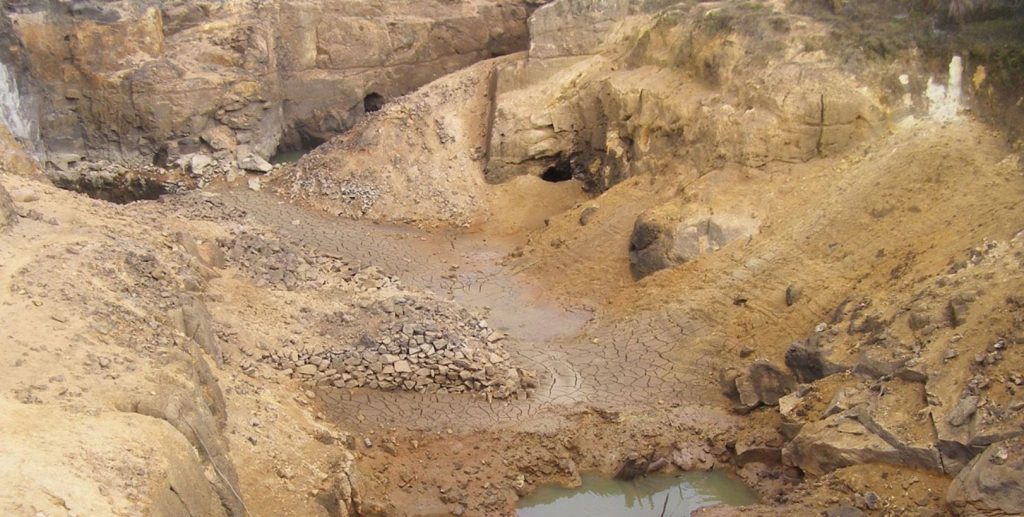Lavras Gold discovers new gold deposit at LDS Project, Brazil

Lavras Gold Corp. [LGC-TSXV] reported drilling and assay results from the LDS project (Lavras Du Sol) in southern Brazil confirm that a significant new gold deposit has been found at its Matilde target. These results come just two months after Lavras Gold announced bonanza gold grades at Zeca Souza and three months after a NI 43-101 compliant resource for the Cerrito Deposit increased the company’s consolidated gold resources to 1 million ounces.
“We are very gratified with these results from Matilde,” said Michael Durose, Lavras Gold’s President and CEO. “We are seeing long broad zones of continuous intercepts of important gold mineralization accentuated with multiple narrower higher-grade intervals and in certain instances, bonanza gold grades associated with visible gold.
“Long continuous zones of gold mineralization both laterally and to a vertical depth of more than 480 metres where it is still open, indicate a very strong and large gold system at Matilde.
“Our next steps will be to follow up on these results to test for extensions to gold mineralization along strike to the west and to the northeast where we are drilling at Matilde Extension. Work will also focus on better defining the nature of the structures that host the gold, alteration styles associated with mineralization, and their relationship to the large 3-kilometre-long gold in soil anomaly that is centered on the Matilde target.”
Matilde highlights: continuity, open, moderate gold mineralization accentuated by narrower higher-grade intervals, and bonanza grades. Located approximately 4.5 km south of the town of Lavras do Sul. Matilde is one of six priority drilling targets. There are 23 known gold occurrences at LDS. Other drilling targets include Matilde Extension, Caneleira, Vila Marieta, Mato Feio, and Zeca Souza.
Important gold mineralization occurs in 91% or 30 out of 33 holes totalling 9,847 metres drilled at Matilde to date. This news release discloses new assay results from 26 drillholes totalling 8,349 metres.
20MT-001 returned 62.53 metres grading 0.62 g/t gold from 189.70 metres, including 12.77 metres grading 0.89 g/t gold from 191.48 metres and 14.00 metres grading 1.13 g/t gold from 228.40 metres. 20MT-002 returned 144.60 metres grading 0.69 g/t gold from 117.00 metres, including 27.00 metres grading 1.04 g/t gold from 184.0 metres.
21MT-008 returned 10.00 metres grading 0.88 g/t gold from 83.00 metres, including 3.00 metres grading 1.33 g/t gold from 83.00 metres. 21MT-026 returned 28.00 metres grading 1.05 g/t gold from 174 metres, including 8.00 metres grading 2.59 g/t gold from 189.00 metres.
22MT-034 returned 19 metres grading 0.67 g/t gold from 56.00 metres, including 3.00 metres grading 1.04 g/t gold from 64.00 metres; 29.00 metres grading 0.82 g/t gold from 198.00 metres, including 4.00 metres grading 2.57 g/t gold from 203.00 metres; and 2.00 metres grading 4.13 g/t gold from 205.00 metres.
Bonanza gold grades (more than 10.00 g/t) usually associated with visible gold. At least two different relationships have been observed.
The drill program tested a portion of a coincident 3-km long gold in soil anomaly centered on an east-west trending magnetic-low anomaly that is interpreted to be a major gold-hosting structure.
Matilde remains open along strike and at depth. Highlights of drilling are as follows: 21MT-008, collared 112 metres west of 20MT-001 and drilled from north to south returned multiple zones of gold mineralization from surface to the end of the hole at a depth of 415.55 metres.
The hole bottomed in gold mineralization and remains open. Highlights include 1.60 g/t gold over 3.02 metres from 48.30 metres of 2.03 g/t gold over 3.43 metres from 56.23 metres; 0.88 g/t gold over 10.00 metres from 83.00 metres, including 1.33 g/t gold over 3.00 metres from 83.00 metres; 0.54 g/t gold over 58.00 metres from 207.00 metres, including 3.57 g/t gold over 1.00 metres from 207.00 metres.
22MT-027 was collared about 60 metres west of drillhole 21MT-008 and drilled from south to north. The purpose was to try to understand the dip direction of the east-west structural corridor. The gold-bearing east-west structure was encountered as follows 0.41 g/t gold over 25.76 metres from 254.24 metres, including 0.93 g/t gold over 0.88 metres from 255.12 metres; 0.74 g/t gold over 8.00 metres from 272.0 metres and 1.01 g/t gold over 1.00 metre from 279.0 metres.
22MT-028 was collared 62.00 metres east of hole 22MT-027and drilled from south to north. The purpose of this hole was to test the dip direction of the east-west structural corridor. Multiple zones of elevated gold values were encountered throughout the hole beginning from surface including 1.78 g/t gold over 1.00 metre from 33.00 metres; 1.41 g/t gold over 3.73 metres from 122.00 metres; 0.56 g/t gold over 14.50 metres from 253.00 metres, including 5.47 g/t gold over 0.62 metres from 253.84 metres and 0.39 g/t gold over 11.18 metres from 283.82 metres, including 3.17 g/t gold over 1.07 metres from 286.93 metres.
Refer to original press release for complete drill results.
